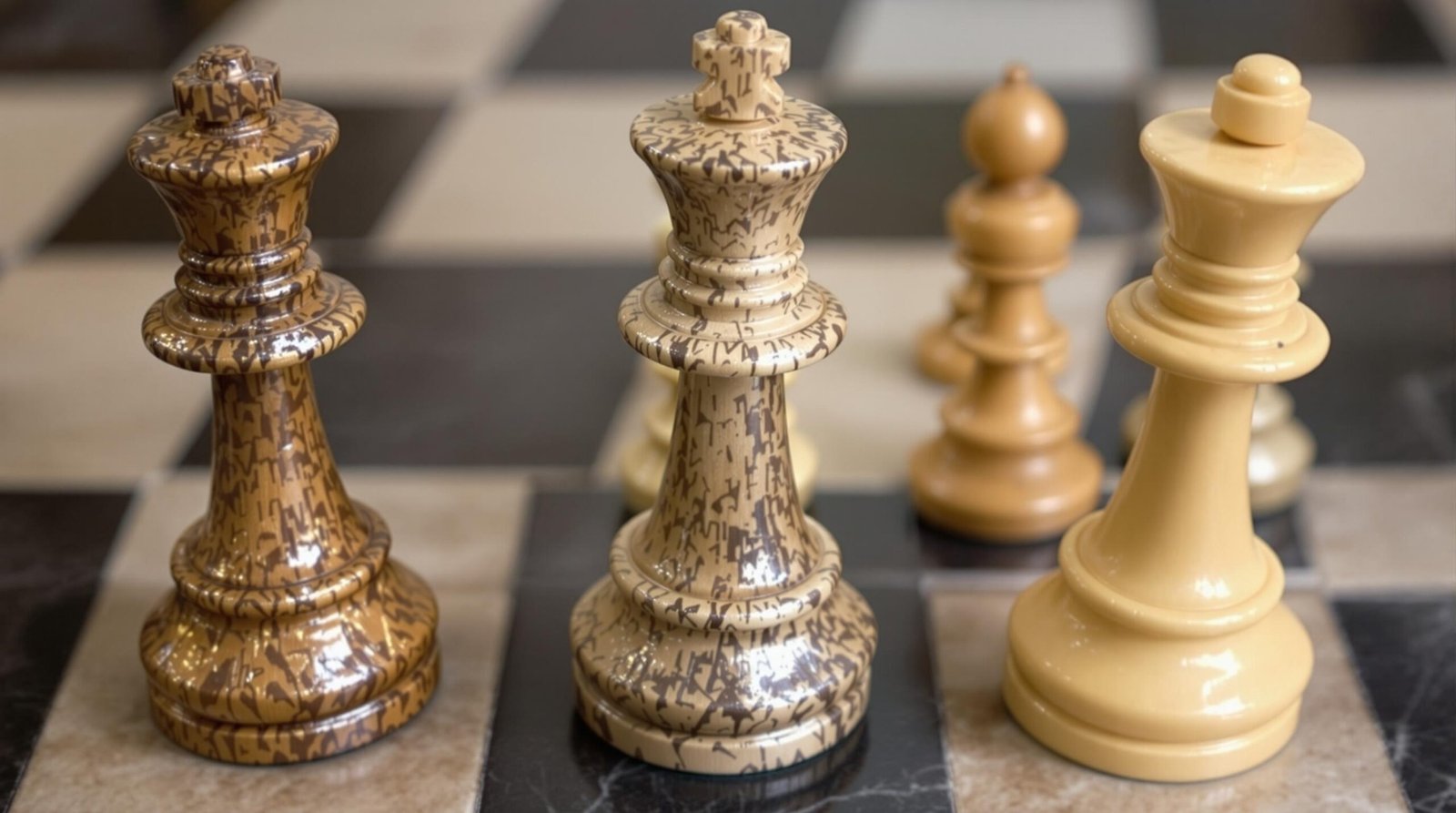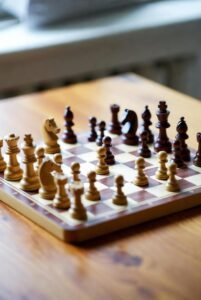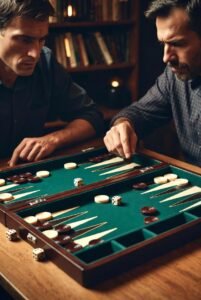
10 Most Common Chess Mistakes and How to Avoid Them?

Chess, often dubbed the game of kings, has captivated minds for centuries with its perfect blend of strategy, foresight, and psychological warfare. From casual players enjoying a match in the park to grandmasters battling it out in prestigious tournaments, everyone makes mistakes. Even world champions like Magnus Carlsen occasionally blunder. Understanding these common pitfalls can significantly improve your game regardless of your current rating. Let’s explore the 10 most common chess mistakes and practical strategies to sidestep them on your journey to chess improvement.
1. Neglecting Development in the Opening
Perhaps the most fundamental error beginners make is failing to develop their pieces efficiently in the opening phase. Whilst it might be tempting to advance pawns or make premature attacks, proper piece development forms the bedrock of a solid chess foundation.
Many players fall into the trap of moving the same piece multiple times during the opening or focusing excessively on pawn moves. This approach leaves your other pieces languishing on their starting squares, essentially playing with fewer pieces than your opponent. The consequences can be dire—your opponent’s fully mobilised army can quickly overwhelm your underdeveloped position.
To avoid this mistake, adhere to classical opening principles: control the centre with pawns, develop knights before bishops, castle early to safeguard your king, and connect your rooks. A helpful guideline is to aim for completing your development within the first 10-12 moves. Remember that each piece should ideally move only once during the opening unless there’s a concrete tactical justification for additional moves.
The great José Raúl Capablanca once remarked, “In the opening a master should play like a book, in the middlegame he should play like a magician, in the ending he should play like a machine.” This wisdom remains remarkably relevant today—master the fundamentals before attempting to conjure magic.
2. Ignoring the Centre
The four central squares (d4, d5, e4, e5) represent the most valuable real estate on the chessboard. Central control provides your pieces with greater mobility and creates pathways for potential attacks on either flank. Yet many players, particularly beginners, neglect these crucial squares.
This oversight often manifests as excessive focus on wing play before establishing central presence, or launching premature attacks without sufficient central support. Such approaches typically backfire against competent opposition who will leverage their central dominance to repel flank attacks or launch devastating counterattacks through the centre.
To remedy this mistake, prioritise central pawns in your opening repertoire. Even if you prefer hypermodern openings that control the centre with pieces rather than pawns initially, the ultimate aim remains influencing those critical central squares. Study games of positional masters like Anatoly Karpov or Tigran Petrosian to appreciate the subtle art of central control and how it creates the foundation for successful operations elsewhere on the board.
Remember that central control isn’t merely about physical occupation with pawns—it’s about influence. A fianchettoed bishop exerting pressure on central squares from g2 or b2 contributes meaningfully to central control despite its seemingly peripheral position.
3. Overlooking Simple Tactics
Even experienced players occasionally fall victim to straightforward tactical oversights—missing forks, pins, skewers, or discovered attacks that result in immediate material loss. These tactical blindspots can instantly nullify hours of careful positional play.
Such oversights often stem from confirmation bias (seeing what you want to see), calculation fatigue, or simply failing to consider all of your opponent’s options. The classic example is the knight fork winning the queen or rook that wasn’t spotted because the player was focused elsewhere on the board.
Developing tactical awareness requires consistent practice. Daily tactical puzzles form an essential training regimen for players of all levels. Start with simpler puzzles focusing on fundamental patterns, gradually increasing complexity as your pattern recognition improves. Online chess platforms offer thousands of puzzles calibrated to your skill level.
Additionally, incorporate a tactical checklist into your thinking process during games. Before finalising any move, scan for checks, captures, and threats—both those you might create and those your opponent could unleash. This simple discipline can eliminate a significant percentage of tactical oversights.
4. Poor Piece Coordination
Harmonious piece coordination represents one of the most elegant aspects of chess mastery, yet achieving it consistently proves challenging. Many players develop their pieces to seemingly reasonable squares without considering how they work together as a unified force.
This lack of coordination manifests in various ways: bishops and pawns blocking each other, rooks failing to occupy open files, knights positioned on squares where they lack future prospects, or simply having different pieces aiming toward contradictory goals. The result is an army that possesses individual strength but lacks collective purpose.
Improving piece coordination begins with developing a coherent plan based on your position’s characteristics. Ask yourself what each piece’s ideal position might be given your strategic aims. Consider not just where pieces are now, but where they might need to be several moves hence. Study the games of positional virtuosos like Capablanca or Carlsen, noting how their pieces seem to dance in perfect harmony.
A practical exercise is to occasionally review your completed games, identifying moments where your pieces worked at cross-purposes. This retrospective analysis can reveal patterns in your coordination weaknesses that might otherwise go unnoticed.
5. Inadequate King Safety
The king’s vulnerability makes proper king safety paramount throughout the game, not merely during the opening. Yet countless games are lost through neglecting this fundamental principle, particularly in amateur play.
Common manifestations include delaying castling without justification, weakening the pawn shield in front of a castled king, or drifting into positions where the king becomes exposed to sudden attacks. The consequence is often a rapid collapse as attacking pieces swarm the vulnerable monarch.
Avoiding this mistake requires developing a healthy paranoia regarding king safety. Castling should generally be completed within the first 10 moves unless there’s concrete justification for delay. Once castled, consider the pawn shield sacred—moving these pawns demands careful calculation of consequences.
When evaluating potential positions, always ask: “Where is my king, and could it become vulnerable?” Similarly, develop the habit of considering potential sacrifices your opponent might make to expose your king. Remember that material advantage means little if your king faces checkmate.
Study the attacking masterpieces of players like Garry Kasparov or Mikhail Tal to understand how king safety breaches are exploited, and defensive models like Petrosian to learn prophylactic thinking that prevents such vulnerabilities.
6. Exchanging Pieces Without Purpose
Many players develop the habit of automatically exchanging pieces when the opportunity arises without considering the strategic implications. Purposeful exchanges should serve your position’s needs rather than occurring reflexively.
This mistake commonly appears when players trade pieces simply because they can, failing to evaluate whether the exchange benefits their position. Equally problematic is avoiding exchanges when simplification would be advantageous. Both errors stem from not understanding the position’s character and requirements.
To avoid purposeless exchanges, develop a mental checklist before trading pieces. Consider questions like: Does this exchange improve my pawn structure? Does it enhance my space advantage or relieve spatial disadvantage? Does it expose weaknesses in my opponent’s camp? Does it bring me closer to an endgame that favours my position?
Remember that exchanges generally favour the player with the advantage in space, material, or better minor pieces. If you’re cramped, exchanges can provide breathing room. If you hold a material advantage, trading pieces often brings you closer to a winning endgame. Conversely, if you’re defending, keeping pieces on the board might maintain tactical chances.
7. Neglecting Pawn Structure
Pawns determine the battlefield’s topography in chess, yet many players pay insufficient attention to pawn structure when making decisions. These seemingly humble units define spatial advantage, piece mobility, and potential weaknesses that can persist throughout the game.
Common structural mistakes include creating unnecessary doubled pawns, accepting isolated pawns without compensation, or forming immobile pawn chains that restrict one’s own pieces. These structural weaknesses often become chronic liabilities that skilled opponents will exploit mercilessly.
Developing structural awareness begins with studying classic pawn formations and their strategic implications. Understand the strengths and weaknesses of structures like the isolated queen’s pawn, hanging pawns, pawn chains, and pawn islands. Learn which pieces complement particular structures—for instance, knights thrive in closed positions with fixed pawn chains, while bishops prefer open positions with mobile pawns.
Before creating permanent structural changes through captures or advances, consider the long-term implications. A pawn move cannot be undone, making it particularly consequential. Study the positional masterpieces of players like Kramnik or Karpov, who excel at exploiting minute structural advantages.
8. Poor Time Management
Effective time management remains a challenge even for experienced players. The dual pressures of making optimal decisions whilst keeping pace with the clock create a persistent tension throughout competitive chess.
The most obvious manifestation is severe time trouble, where players have just seconds to make critical decisions. However, equally problematic is the opposite extreme—using excessive time on relatively straightforward moves, leaving insufficient time for complex positions later. Both scenarios lead to preventable errors.
Developing better time management begins with recognising which positions demand detailed calculation and which can be played more intuitively. Critical junctures—tactical complications, important strategic decisions, or unfamiliar positions—naturally require more time. However, familiar opening sequences, forced recaptures, or obvious moves should be played relatively quickly.
Practice with chess clocks even in casual games to develop time awareness. Establish a rough time budget for each phase of the game based on the time control. For example, in a 90-minute game, you might allocate approximately 30 minutes for the opening, 40 for the middlegame, and 20 for the endgame, adjusting as needed based on the position’s complexity.
Remember that perfect chess is impossible—seeking the absolute best move in every position inevitably leads to time trouble. Instead, aim for reasonable moves in complex positions, saving time for truly critical moments.
9. Failing to Calculate Forced Sequences
Many games are decided by failures in concrete calculation, particularly in forced sequences where precise move order is crucial. Players often assess positions based on general principles without verifying their evaluations through specific calculation.
This error typically manifests in miscalculated exchanges, overlooked intermediate moves, or failing to think through an entire sequence to its logical conclusion. The result is often entering positions that turn out significantly worse than initially anticipated.
Improving calculation requires both practice and discipline. Develop a systematic approach: identify candidate moves, calculate variations methodically, and verify your analysis before executing. Resist the temptation to calculate the same line repeatedly—once you’ve analysed a variation thoroughly, trust your calculation and move on.
Tactics puzzles specifically focused on calculation (rather than pattern recognition) can significantly improve this skill. Choose puzzles requiring deep calculation rather than those solvable through recognising familiar patterns. Additionally, practice calculating without moving pieces—visualisation strength dramatically improves with dedicated effort.
Remember that calculation isn’t merely about finding tactical shots—it’s equally important for verifying seemingly quiet positional moves. Even apparent simplifications require precise calculation to confirm the resulting position matches your assessment.
10. Ignoring Your Opponent’s Plans
Chess is fundamentally a dialogue between two minds, yet many players focus exclusively on their own ideas whilst neglecting their opponent’s intentions. This one-sided approach leaves them vulnerable to threats and missed opportunities.
This mistake often appears as tunnel vision—pursuing your plan without considering how your opponent might respond or interrupt it. Equally problematic is failing to ask what your opponent’s last move actually threatens or prepares, potentially missing the underlying strategic idea.
Developing two-way thinking begins with a simple discipline: after each of your opponent’s moves, ask yourself: “What is the threat? What does this move accomplish? What is my opponent planning?” Similarly, before executing your moves, consider how your opponent might respond and whether those responses could disrupt your plans.
Study annotated master games where commentators explain both sides’ ideas and how they interact. Pay particular attention to prophylactic thinking—moves that prevent the opponent’s plans before addressing one’s own goals. Players like Petrosian and Karpov excel at this anticipatory style.
Remember that chess improvement isn’t merely about implementing better plans—it’s equally about disrupting your opponent’s intentions whilst advancing your own. The interplay between these offensive and defensive elements creates the rich strategic dialogue that makes chess endlessly fascinating.
By recognising these common mistakes and implementing the suggested remedies, you’ll develop greater awareness of potential pitfalls in your own play. Chess improvement rarely follows a linear path, but addressing these fundamental errors will eliminate many unnecessary losses and create a solid foundation for your continued growth in this magnificent game. Whether you’re a casual player or aspiring master, vigilance against these typical errors will serve you well in your chess journey.





